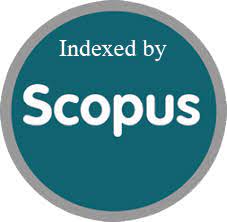Analysis of Flexural Behaviour of Hybrid Stainless Steel I-Beams
Keywords:
Hybrid Stainless Steel Beams, Flexural Behavior; Duplex Stainless Steel (DSS), Lean Duplex Stainless Steel (LDSS), Finite Element Analysis, ABAQUS, Local Buckling, Direct Strength Method (DSM), EN 1993-1-4, Structural DesignAbstract
This study presents a comprehensive numerical investigation into the flexural behavior of Hybrid Stainless Steel (HSS) I-beams using the finite element software ABAQUS. The hybrid sections incorporate Duplex Stainless Steel (DSS) and Lean Duplex Stainless Steel (LDSS), aiming to balance strength, ductility, and cost efficiency. The research validates the finite element (FE) models against experimental results from literature and evaluates the influence of geometric parameters such as flange and web slenderness on moment capacity and failure modes. Parametric studies reveal that hybridization significantly enhances moment resistance while mitigating local buckling. The study further compares numerical results with predictions from the European Standard EN 1993-1-4 and the Direct Strength Method (DSM). Findings demonstrate that DSM provides more accurate and conservative predictions for hybrid sections, making it a viable design approach for HSS beams. The results contribute to a deeper understanding of the flexural performance of hybrid stainless steel beams and support the development of efficient and reliable design methods for stainless steel structural members.
Downloads
Metrics
References
Arrayago, I., Real, E., & Gardner, L. (2017). Structural design of cold-formed high strength stainless steel circular and square hollow sections. Thin-Walled Structures, 119, 234–244.
Azizinamini, A., El-Remaily, A., & Shahrooz, B. (2007). Performance of hybrid steel bridge girders under negative moment. Journal of Bridge Engineering, 12(1), 55–64.
Baddoo, N. R. (2008). Stainless steel in construction: A review of research, applications, challenges and opportunities. Journal of Constructional Steel Research, 64(11), 1199–1206.
Barth, K. E., & White, D. W. (1998). Experimental studies of steel I-beams with slender webs. Journal of Structural Engineering, 124(3), 274–282.
Becque, J., Shifferaw, Y., & Rasmussen, K. J. R. (2008). Direct strength method for stainless steel members. Journal of Constructional Steel Research, 64(11), 1231–1238.
Carvalho, D. A., Coelho, A. M. G., & Rodrigues, J. P. C. (1990). Stainless steel as a structural material. J. Construct. Steel Res., 14(1–2), 149–165.
European Committee for Standardization. (2015). Eurocode 3: Design of steel structures – Part 1-4: General rules – Supplementary rules for stainless steels (EN 1993-1-4:2006 + A1:2015). Brussels: CEN.
Frost, R. W., & Schilling, C. G. (1964). Hybrid steel beams. Journal of the Structural Division, 90(3), 95–122.
Gardner, L. (2005). The use of stainless steel in structures. Progress in Structural Engineering and Materials, 7(2), 45–55.
Gardner, L., & Cruise, R. B. (2009). Structural behaviour of stainless steel SHS and RHS beam-columns. Thin-Walled Structures, 47(9), 1042–1058.
Gardner, L., Saari, N., & Wang, F. (2016). Comparative experimental study of hot-rolled and laser-welded stainless steel I-sections. Journal of Structural Engineering, 142(3), 04015139.
Greco, V. (2000). Application of high-performance steels in hybrid I-girders. Journal of Bridge Engineering, 5(3), 194–202.
Greco, V., & Earls, C. J. (2003). Plastic local buckling and design of hybrid I-girders. Journal of Structural Engineering, 129(9), 1232–1239.
Haaijer, G. (1957). Lateral buckling tests of I-beams. Journal of the Structural Division, ASCE, 83(ST2), 1–28.
Hassanein, M. F., & Silvestre, N. (2013). Numerical analysis of stainless steel stiffened plates under biaxial compression. Engineering Structures, 48, 174–185.
Downloads
Published
How to Cite
Issue
Section
License

This work is licensed under a Creative Commons Attribution 4.0 International License.
You are free to:
- Share — copy and redistribute the material in any medium or format
- Adapt — remix, transform, and build upon the material for any purpose, even commercially.
Terms:
- Attribution — You must give appropriate credit, provide a link to the license, and indicate if changes were made. You may do so in any reasonable manner, but not in any way that suggests the licensor endorses you or your use.
- No additional restrictions — You may not apply legal terms or technological measures that legally restrict others from doing anything the license permits.






